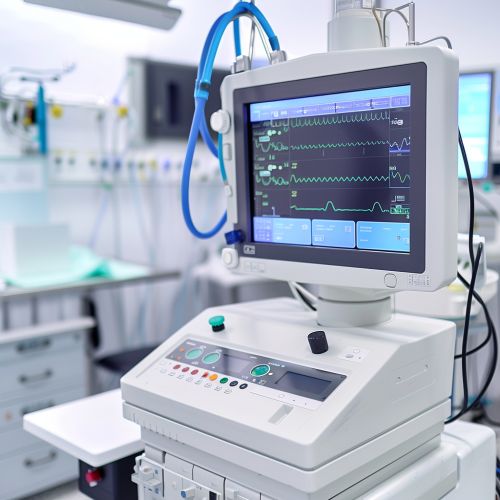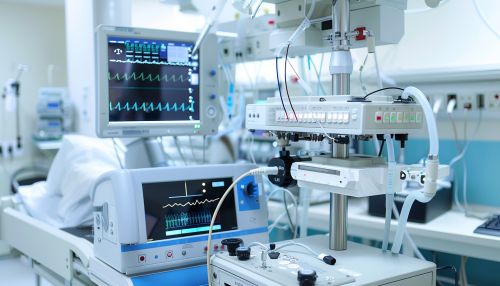Electroencephalograph
Introduction
An electroencephalograph (EEG) is a non-invasive method used to record electrical activity of the brain. The technique is typically used in the field of neuroscience to diagnose and monitor neurological disorders such as epilepsy, sleep disorders, encephalopathies, and brain death.


History
The concept of the EEG was first introduced in the 19th century when scientists discovered that the brain generates electrical activity. The first human EEG recording was made by Hans Berger, a German psychiatrist, in 1924. This marked a significant milestone in the field of neuroscience and paved the way for the development of modern EEG technology.
Principles of Operation
An EEG works by detecting fluctuations in voltage resulting from ionic current flows within the neurons of the brain. Electrodes are placed on the scalp to measure these voltage fluctuations. The recorded signals are then amplified and digitized for further analysis.
EEG Electrodes
EEG electrodes are typically made of silver, gold, or tin and are attached to the scalp using a conductive gel or paste. The choice of electrode material can significantly influence the quality of the EEG signal. The placement of the electrodes is usually determined by the International 10-20 system, a standardized method based on the relationship between the location of an electrode and the underlying area of cerebral cortex.
EEG Signal Processing
The raw EEG signal is often contaminated with noise and artifacts that need to be removed before the signal can be analyzed. This is typically done using various signal processing techniques such as filtering, artifact removal, and spectral analysis. The processed EEG signal can then be used to extract features that are indicative of different brain states or neurological disorders.
Clinical Applications
EEGs are widely used in clinical settings for the diagnosis and monitoring of various neurological disorders. They are particularly useful in the diagnosis of epilepsy, where they can detect the abnormal electrical activity that characterizes this condition. EEGs are also used to monitor brain activity in patients under anesthesia, in intensive care units, and during surgery.
Research Applications
In addition to their clinical applications, EEGs are also used in research settings to study brain function and cognition. They are particularly useful in cognitive neuroscience, where they can provide insights into the neural mechanisms underlying cognitive processes such as attention, memory, and language.
Limitations
While EEGs are a valuable tool in neuroscience, they also have several limitations. These include poor spatial resolution, susceptibility to artifacts, and the inability to detect neural activity below the surface of the cortex.
Future Directions
Despite these limitations, the field of EEG continues to evolve with advances in technology and signal processing techniques. Future directions for EEG research include the development of more sophisticated methods for artifact removal, the integration of EEG with other imaging modalities, and the application of machine learning techniques for EEG analysis.
